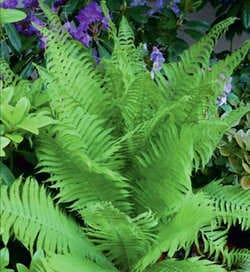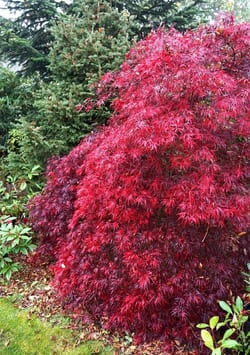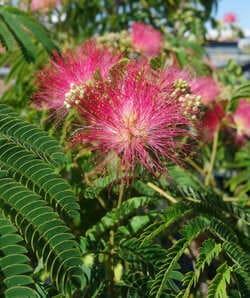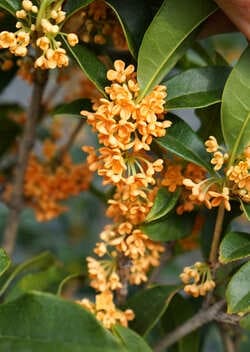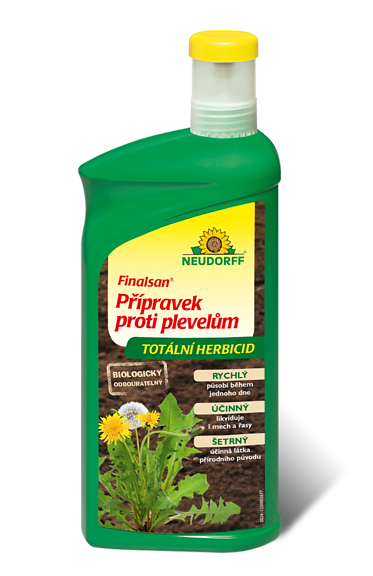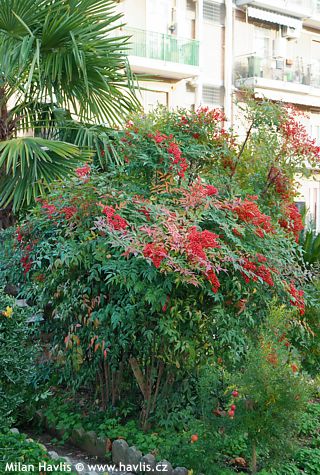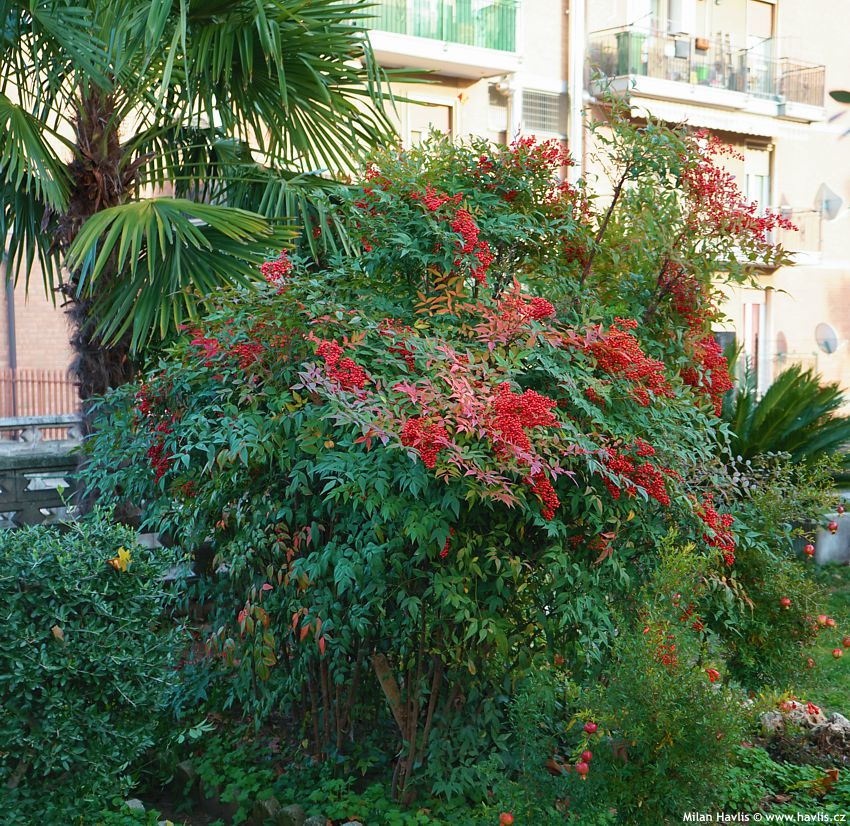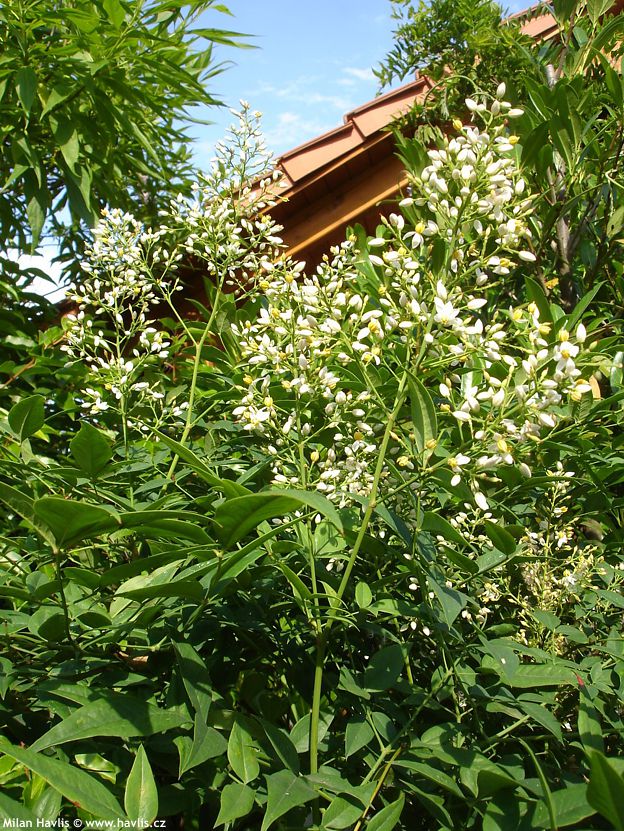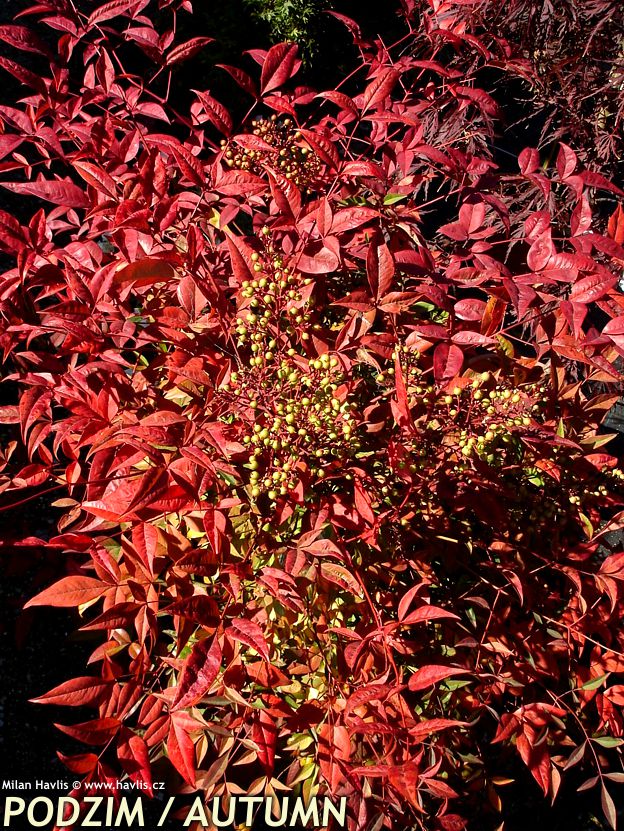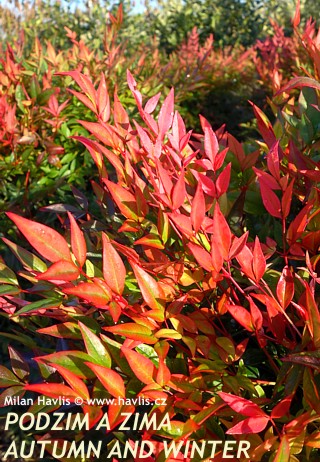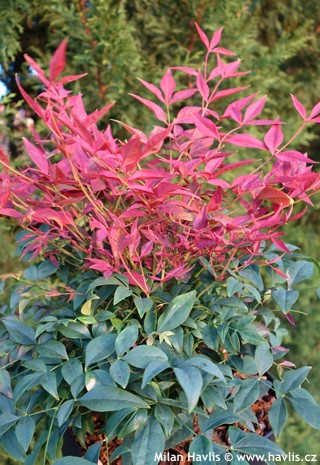Nandina domestica heavenly bamboo
Nandina is an evergreen or semi-evergreen shrub from India, China and Japan. Common name heavenly bamboo refers to its crinkly leaves that really whisper like papery bamboo when touched and in stronger wind.
This is the species that is believed to be the toughest of all nandinas as far as both hardiness and soil adaptability. It is a shrub though it forms branchless upright shoots with pinnate up to 3-pinnate compound leaves. They are lance-shaped, coral pink to bronze when they emerge, changing to deep green in summer, and turning bright red in autumn and winter. The whole leaf is usually 40-50 cm long, mature plants in milder climates bear up to 90 cm long leaves. In July it forms conical panicles of tiny white blooms with conspicuous deep yellow anthers. Flowers are followed by bright red fruit in winter that persist for a long time, often until end of spring of the following year. Fruit is non-edible, one source even says they are poisonous for humans.
Beside the coloured leaves in winter, the plant structure is usually the reason why you like it. Heavenly bamboo looks a bit like a small palm as it has trunks and frond-like leaves at the top. That is why it is a favourite centre point of mixed arrangements, surrounded by shorter, mostly evergreen plants with smaller leaves. Obviously, it also looks great when planted like a small specimen among other shrubs or trees that are some 30-50 cm apart not to disturb its architecture.
Nandina likes rich, moist but well-drained soil though it shows great adaptability to almost any soil type apart from sandy and boggy. Once established it requires zero maintenance apart from occasional watering in dry spells and before winter. It if pest and disease free. In harsh winter it may lose some leaves but will always make new ones in the spring. Hardy to about -23°C (USDA zone 6). It is not suitable for areas with constant cold wind and has not been tested in mountainous regions with long-lasting winters.
Last update 05-12-2009



















